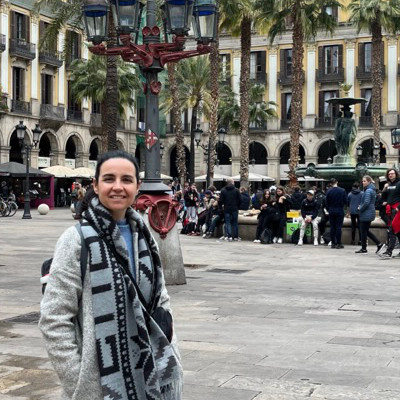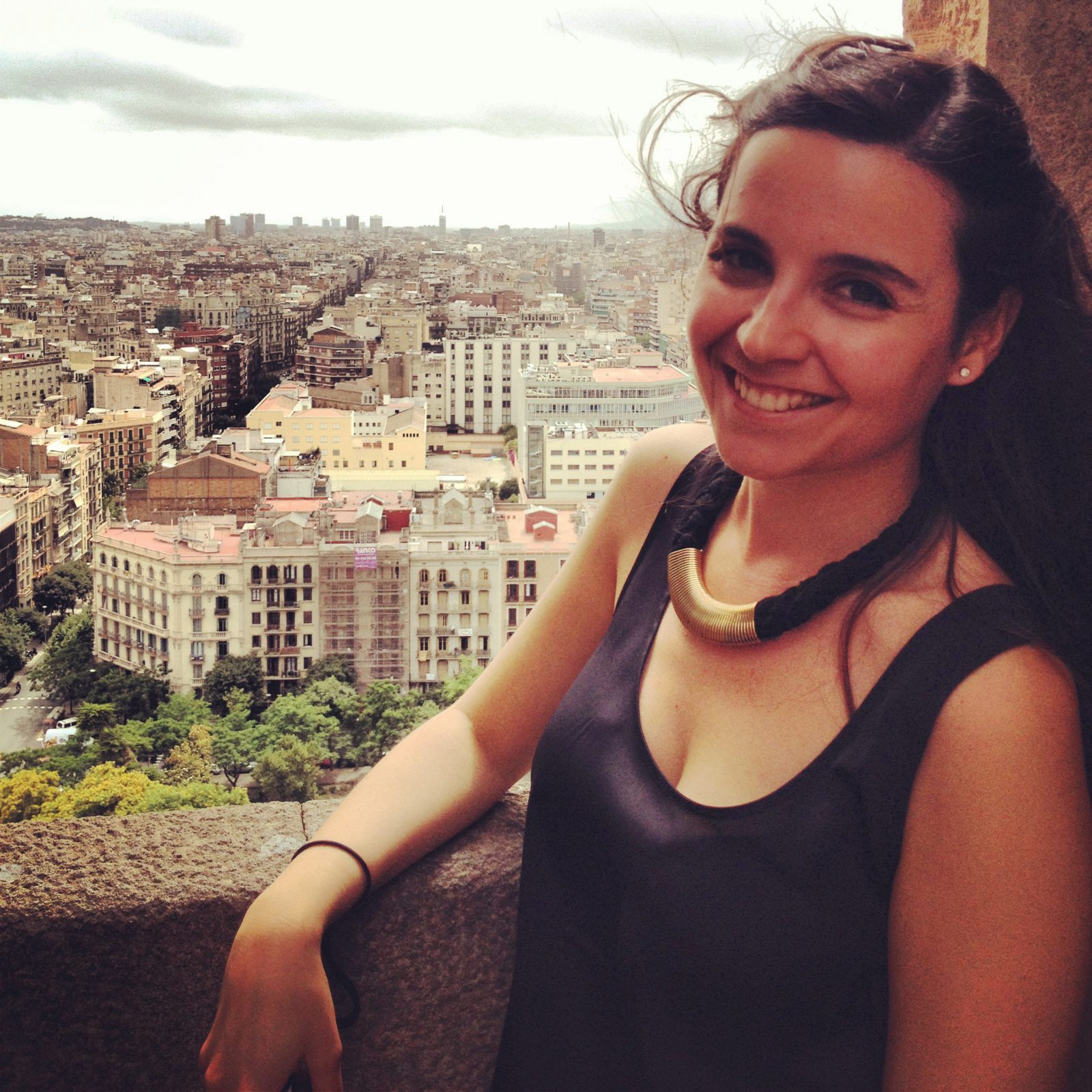The Parc de la Ciutadella, with its 18 hectares in the center of the city, is one of the largest urban parks in Barcelona and a favorite spot for locals to relax, walk, picnic, or jog. The park is home to several interesting buildings and Barcelona sights (like various museums and the Barcelona Zoo), and often hosts activities, ensuring there’s always something to see and do at La Ciutadella.
What to See and Do at Parc de la Ciutadella
Parc de la Ciutadella is one of Barcelona’s most popular urban parks, offering numerous options for your visit: relax by the lake and waterfall, rent a boat to row with your loved one, calmly observe the various statues in the park, or even visit the zoo.
The park also houses several notable buildings such as the Castell dels Tres Dragons, the Hivernacle, and the Parliament of Catalonia.
Locals enjoy coming here to relax, read a book, picnic, or stroll.
A giant mammoth and a bandstand are among the elements that surprise visitors.
In short, it’s a beautiful park in the middle of the city with countless activities and great places to visit!
Castell dels Tres Dragons
The medieval-looking castle at the top of the park, designed by architect Lluís Domènech i Montaner, is one of La Ciutadella’s most fascinating buildings. Known as the Castell dels Tres Dragons (‘castle of the three dragons’), it served as a café-restaurant during the 1888 World’s Fair and housed Barcelona’s Museu de Zoologia (Zoology Museum) for many years.
Currently, this building is part of the Museu de les Ciències Naturals de Barcelona (Museum of Natural Sciences), thanks to its laboratory.

Hivernacle
This iron structure topped with a glass roof and adorned with arches and beautiful moldings was the work of Josep Amargós. Despite being one of the most beautiful gems from the 1888 World’s Fair, it is unfortunately underutilized.
The Hivernacle is part of Barcelona’s Modernisme tour.
Jardins Fontserè i Mestre
Along the pleasant promenade next to the Hivernacle, Museu Martorell, and the Umbracle lies the Jardins Fontserè i Mestre, characterized by its green lawns, numerous seating areas along the side, and trees that provide shade to the park.
At the end of the promenade, you’ll find the equestrian statue of General Prim.
Museu Martorell
Situated between the Hivernacle and Umbracle is the Museu Martorell, which, like the laboratory in the Castell dels Tres Dragons, is part of the Museu de Ciències Naturals de Barcelona (Museum of Natural Sciences) and aims to preserve the heritage of zoological and geological collections.
However, the museum is currently closed for maintenance.
Umbracle
Unlike the Hivernacle, this is a brick building with a notable oval wooden roof. Tropical plants are found inside the greenhouse.
The Umbracle, designed by Josep Fontseré in 1883 for the 1888 World’s Fair, is also part of the Modernisme tour of Barcelona.
Parliament of Catalonia
The Catalan Parliament has its headquarters here, in the former military arsenal of the citadel. In front, you’ll find the Plaça de Joan Fiveller, designed in 1916 by French landscape engineer J.C.N. Forestier.
It’s an orderly and tranquil spot, surrounded by cypress trees and shrubbery beds, with an elliptical pond at the center.
In the middle, admire a replica of Josep Llimona’s beautiful sculpture “El Desconsol,” one of the park’s most important and beautiful pieces.
Opposite are the other two remaining buildings from the time when this was a military citadel: the old military chapel, the small Parroquia Castrense de la Ciudadela, and the former governor’s palace, now the Verdaguer Secondary School.

The Lake
The large lake at the center of La Ciutadella is one of the favorite spots for locals. This pleasant and peaceful lake is popular with couples. If you want to relax, sit at one of the benches in front of the lake. And for a romantic date, rent one of the rowboats or take an evening stroll through the park.

The Waterfall
The monumental waterfall (also known as the Cascada Fountain) was designed by Josep Fontserè in 1875 and inaugurated in 1881. Fontserè had a very young Antoni Gaudí as his assistant, who is credited with some of the decorative motifs of the waterfall and its rock garden.
The waterfall is adorned with many sculptural elements by other late 19th-century Catalan artists, added after its inauguration. The centerpiece is the Birth of Venus, by Venanci Vallmitjana, above which stands the Chariot of Aurora, by Rossend Nobas, who also created four pairs of fauns and the figure of Eros. The four griffins protecting Venus were designed by Rafael Atché.
On either side of the waterfall, there’s a staircase leading to a sort of temple. From this balustrade, you can also enjoy a privileged view of Parc de la Ciutadella.

Art and Sculptures
Declared a historic-artistic monument in 1951, the park is considered an open-air museum due to the abundance and quality of its sculptures. It features works by Frederic Marès (equestrian statue of General Prim), Eusebi Arnau (marble bust of Marià Aguiló), Josep Clarà (sculpture dedicated to the Catalan Volunteers of 1914), Josep Llimona (female sculpture of ‘El Desconsol’), Pau Gargallo (marble bust of Lleó Fontoba), and Manuel Fuxà (marble statues of Milà i Fontanals, Víctor Balaguer, Joaquim Vayreda, and the bronze figure of Bonaventura Carles Aribau).
Two sculptures in the park stand out for their popularity among visitors: ‘The Lady with the Umbrella’ by Joan Roig Soler, which crowns a fountain designed by Josep Fontserè and was one of Barcelona’s symbols for many years, and the giant mammoth, the first and only natural reproduction of extinct animals that the Council for Natural Sciences wanted to install in the park in 1907.

The Barcelona Zoo
The Barcelona Zoo, one of the largest in Europe, occupies half of the park and is a fun place for a day out with children.
At the Zoo de Barcelona, children can see various animals like gorillas, orangutans, hippos, giraffes, anteaters, gazelles, parrots, dolphins, penguins, storks, frogs, turtles, iguanas, alligators, boas, and many others! The zoo has been open since 1892.
Passeig de Sant Joan
After visiting the park, continue walking north from the main entrance of Ciutadella Park to follow one of the most beautiful promenades. The magnificent journey begins at Passeig de Lluís Companys, followed by the monumental Arc de Triomf and Passeig de Sant Joan, culminating opposite the monument to Rius i Taulet. Looking back, you’ll see the beautiful Arc de Triomf in the distance. Undoubtedly one of the most beautiful urban perspectives in Barcelona!
History of Parc de la Ciutadella
Built in the second half of the 19th century, this park is one of the most important parks in Barcelona and was for many years the only park in the city. The park is located on the site where Philip V, after conquering the city on September 11, 1714, built a large military citadel in 1715 to control the city. Hence the name ‘Ciutadella’ park, which means citadel.
In 1869, nearly a century and a half later, General Prim proposed turning the citadel into a public park. The military fort was then demolished by brigades of volunteers. The transformation of this area into a city park offered Barcelona the opportunity to create much-needed green space in the increasingly crowded industrial city.
Josep Fontserè won the contest to design Ciutadella Park and began construction in 1872. The construction of the park progressed slowly and was occasionally interrupted due to political changes, budgetary difficulties, and Fontserè’s resignation in 1886. Fontserè’s original design was later modified to host the 1888 World’s Fair and to build the Barcelona Zoo, one of the largest in Europe.
From the old military citadel, built in 1715, only the old military chapel, designed by Prosper de Verboom in 1728, the governor’s palace (now a secondary school), and the arsenal (now the building of the Catalan Parliament) remain.
The other buildings that adorn the park were built later, many for the 1888 World’s Fair, such as the Castell dels Tres Dragons (the café-restaurant of Domènech i Muntaner), the Umbracle (the greenhouse with tropical plants by Josep Fontserè), and the metal Hivernacle (the greenhouse by Josep Amargós).
How to Get to Parc de la Ciutadella
Ciutadella Park is located next to El Born, very central, and is easily accessible on foot from the Mercat del Born and the Basilica of Santa Maria del Mar. The nearest metro station is Arc de Triomf (L1). You then walk past the Arc de Triomf and Passeig de Lluís Companys towards the sea to reach the main entrance of the park.
Useful information
Price: Free admission (except for activities and the zoo).
Opening Hours: Every day from 10:00 AM until sunset.
Address: Passeig de Pujades, 8 08003 Barcelona
Public Transportation:
Metro: Arc de Triomf (L1)
Bus: 120, B20, B25, H14, H16, V19, N11
Train: Estació de França (R2S, Euromed, Regional Express, Talgo)


